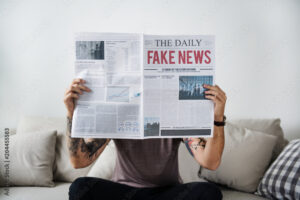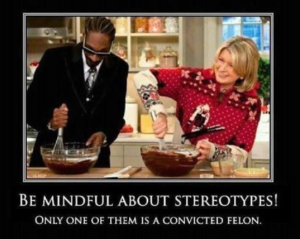Regardless of the subject or grade level, incorporating digital literacy into the curriculum becomes very important when it comes to battling the widespread problem of fake news and digital disinformation. As a future teacher, I see a fantastic chance to include digital literacy skills into my lessons and provide my students with the critical thinking abilities they need to assess information they find online. Teaching digital literacy in my classrooms involves more than simply text comprehension; it also entails developing students’ fact-checking abilities, exploring the reliability of sources, and identifying biases in digital content.
Let’s now discuss strategy. Using media analysis and interpretation in the classroom is one approach to incorporate digital literacy. Imagine students analyzing internet advertisements, social media posts, and digital news stories to identify persuasive strategies, assess the credibility of sources, and tell fact from fiction. Remember to provide writing lessons as well! By training students to create well-researched, fact-based arguments in their written work, we may help them become responsible digital communicators.
Teachers can guarantee a comprehensive approach to teaching digital literacy by adopting the objectives stated in the National Council of Teachers of English (NCTE) framework. The foundation for confidently navigating the digital landscape is critical thinking, good communication, teamwork, and innovation. Students engage critically with digital texts, work together on fact-checking projects, and effectively communicate their results across a variety of media channels when these goals are integrated into digital literacy training.
But wait, there’s more! The goal of incorporating digital literacy into the curriculum is to develop interdisciplinary connections and lifetime learning abilities, not only to check off boxes. Imagine students using their digital literacy skills to analyze primary sources, crunch scientific data, and participate in insightful discussions about society in courses like social studies, science, and history. In an increasingly complex and linked world, we are equipping students to become savvy consumers and responsible producers of digital content by integrating education in digital literacy across the curriculum.
Let’s change topics now and discuss the article about the development of fake news called Developing Critical Literacies: What We Need to Know in a “Fake News” World. The one and only Alec Couros and Katia Hildebrandt wrote this article! Isn’t that cool, my very own prof has astounding articles to read! The days of being able to tell fact from fiction at the checkout line are long gone. These days, fake news isn’t limited to tabloids; it’s invaded social media and mainstream media, making it more difficult to distinguish between fact and fiction.
And let’s not even discuss how fake news affects elections! Fake news on Facebook receive more engagement than real ones, according to startling statistics. It serves as a warning about the darker side of the internet era, when false information has the power to influence public opinion and direct political conversation.
However, it doesn’t end there. The level of disinformation is rising due to technological advancements like DeepFakes and Adobe’s Voco, which makes it more difficult to distinguish fact from fiction online. Furthermore, it’s proven that the old methods of assessment are no longer effective. Checklists are good, but in today’s media environment, they are no match for the sophisticated tactics employed to spread bogus news.
After reading another article, I found some more perspectives of Why do people fall for fake news? A number of factors, such as dwindling trust in traditional media and government, ease of content creation without rigorous fact-checking, collection of diverse content into a single news feed, short attention spans, emotional appeal of fake news stories, and the prevalence of internet robots, are highlighted in the article as contributing to the vulnerability to fake news. It also covers biases like confirmation bias, which causes people to look for, analyze, and remember data that supports their preexisting opinions, and implicit prejudice, which affects attitudes and decisions unintentionally based on group affiliations. It also highlights how social media contributes to the creation of information bubbles in which people are exposed to viewpoints that are similar to their own, thereby escalating prejudices and strengthening assumptions.

And finally I watched a TEDEd video called How to choose your news by Damon Brown. This video provides invaluable insights for sifting through the multitude of news sources available. Rather than just absorbing whatever information is thrown at us, Brown stresses the value of actively choosing reputable and trustworthy news sources. He advises assessing news sources according to their perspective, diversity, and credibility. He also encourages viewers to look for a range of opinions and to critically evaluate the validity of sources. Brown also emphasizes how important it is to comprehend the motivations and biases that underlie news coverage, advising viewers to think about the goals of news organizations and to look for sources that value factual reporting above sensationalism. In the end, the film promotes a knowledgeable and perceptive approach to news consumption, enabling people to decide for themselves what information to believe.
So, what is the solution? It ultimately comes down to creating fresh approaches to fighting false information. To successfully navigate this brave new world of digital deception, we need to arm ourselves with the knowledge and thinking necessary, from developing a critical mindset to perfecting investigative strategies.